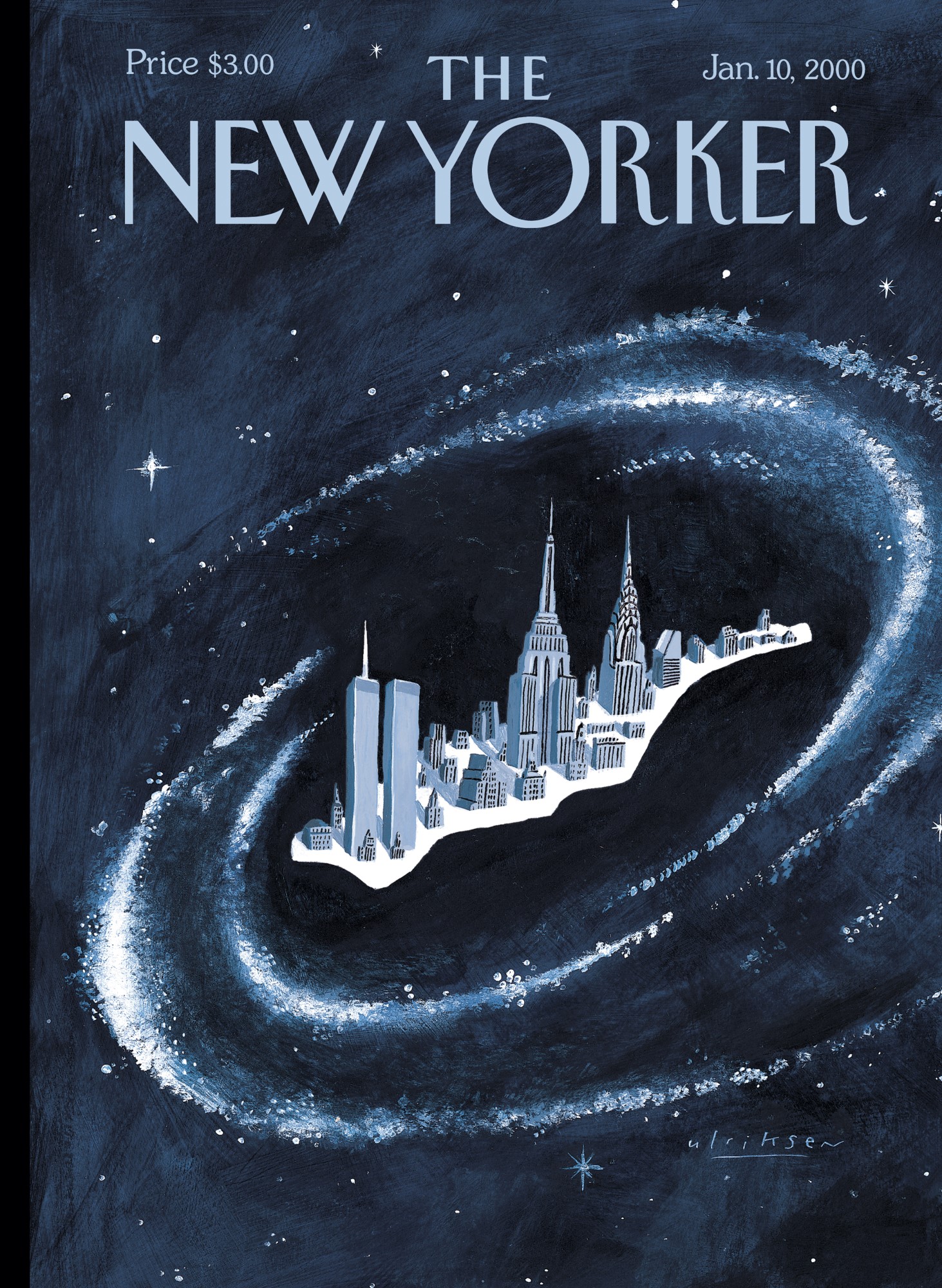Make a donation to the museum
Targeting American Symbols
Targeting American Symbols
- Grades 6 to 12
- Lesson Duration: One Class Period
- Theme: Antecedents of 9/11
Essential Question: Why were the World Trade Center, Pentagon, and U.S. Capitol targeted on 9/11?

“Center of the Universe,” 2000, Mark Ulriksen, Courtesy of The New Yorker © Condé Nast
Learning Goals
Students will identify the three attack sites on 9/11.
Students will consider the symbolic value of each attack site.
Students will understand why the World Trade Center, U.S. Capitol, and Pentagon were targeted.
Vocabulary
Iconic: This means to be widely recognized and well-established.
The New Yorker magazine: This weekly publication provides reporting and commentary on politics, foreign affairs, business, technology, popular culture, and the arts, along with humor, fiction, poetry, and cartoons.
The World Trade Center: This 16-acre commercial complex in lower Manhattan contained seven buildings, a large plaza, and an underground shopping mall that connected six of the buildings, including the Twin Towers.
The Twin Towers: These buildings were the centerpieces of the World Trade Center. They symbolized globalization and America’s economic power and prosperity.
The Pentagon: This five-sided building is the headquarters for the U.S. Department of Defense and serves as a symbol of American military power.
U.S. Capitol: This building is home to the U.S. Congress and the seat of the legislative branch of the federal government.
Khalid Sheikh Mohammed: The 9/11 attacks were masterminded by this Islamist extremist.
Islamist extremism: “Islamists” see Islam as a guiding ideology for politics and the organization of society. They believe that strict adherence to religious law should be the sole basis for a country’s law, as well as its cultural and social life. While some Muslims believe this, many do not. Islamist extremists believe violence is acceptable to achieve these ends. Al-Qaeda is one of many Islamist extremist groups.
al-Qaeda: This international Islamist extremist terrorist network is responsible for the 9/11 attacks. Al-Qaeda is responsible for multiple terrorist attacks since its founding in the 1980s by Osama bin Laden and others who were involved in the war against the Soviet Union in Afghanistan. Their aim has been to overthrow governments in the Middle East, and elsewhere in the Muslim world, which do not strictly enforce a narrow, fundamentalist version of Islam.
Activity
1. Tell students they will be focusing on the following questions:
2. Project or distribute copies of The New Yorker cover titled “Center of the Universe.” Click on the image to use the pinch-and-zoom feature for closer viewing.
3. Ask students to look at the cover for one minute and write down what they notice on a sheet of paper individually or in small groups. If viewing on laptops or tablets, encourage them to use the pinch-and-zoom function.
4. After one minute, conduct a guided inquiry using the following questions:
- Why were the World Trade Center, Pentagon, and U.S. Capitol building targets?
- What did the terrorists hope to accomplish by attacking these sites?
- What do you notice on this cover? What else do you see?
- Where is Manhattan situated on this cover? What makes you say that?
- Why do you think the artist placed Manhattan in space? What makes you say that?
- When was this issue published?
5. Summarize student observations. Ask: What do you think the artist is trying to convey about New York City through the cover? What makes you say that?
6. Reveal the title of the cover, “Center of the Universe,” by Mark Ulriksen. How might being considered the “center of the universe” be both positive and negative? Why would it make the World Trade Center a target?
7. Share the following quotes that highlight both positive and negative attributes:
In spirit, the Trade Center is a United Nations of Commerce. In concept, the Trade Center is a marketplace to the Free World. In operation, the Trade Center will be a thriving city within a city, the dynamo of the port’s trade with the world. (Austin J. Tobin, Port Authority Executive Director, in August 1966)
Sheikh Mohammed said that New York was definitely the economic capital of the US, and thus, was always the first target on his mind … The most attractive targets were high buildings, both for their relative ease of targeting, as well as for symbolic impact. (Excerpt from the trial testimony from Khalid Sheikh Mohammed, mastermind of the 9/11 plot)
8. Tell students that the other two locations that were targeted—the Pentagon and the U.S. Capitol building—were also chosen for their symbolic value. Ask students to consider what each of those buildings symbolizes and why they might be considered important targets by al-Qaeda.
9. Review student responses. Reveal that al-Qaeda hoped that by attacking symbols of American power, they would promote widespread fear throughout the country and severely weaken the United States’ standing in the world community, ultimately supporting their political and religious goals in the Middle East and Muslim world.
10. Return to The New Yorker cover and ask students to identify the publication date again. Conclude by asking: How do you think the meaning of the cover changed after 9/11?